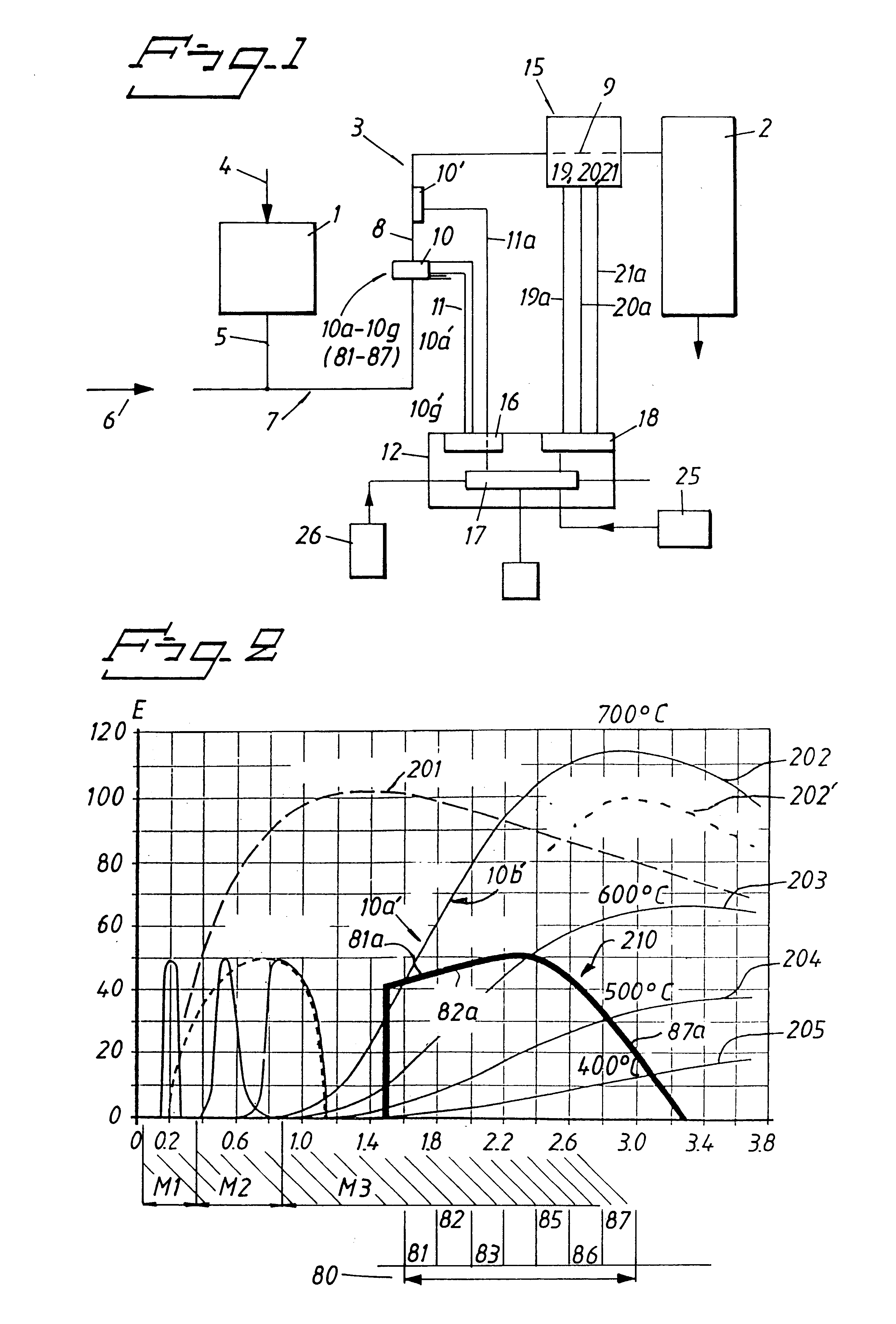Detector system for detecting glowing particles
a detector system and glowing particle technology, applied in the field of can solve the problems of detectors often failing to react, delay reaction, preventative and protective systems, etc., and achieve the effect of greater precision
- Summary
- Abstract
- Description
- Claims
- Application Information
AI Technical Summary
Benefits of technology
Problems solved by technology
Method used
Image
Examples
first embodiment
In a first embodiment, it is required that all output signals 10a'-10g' from the sensor sections 10a to 10g shall be higher than those significant to the stored values 81a-81g corresponding to the graph 210, in order for the calculating circuit 17 to send a signal to the circuit 18.
second embodiment
In a second embodiment, it may be required that a chosen predetermined number of output signals whose respective sub-intensities exceed said maximised value are at least required for causing the calculating circuit 17 to send a signal to the circuit 18.
FIG. 7 is intended to indicate by way of example that the sensor sections 10a, 10c, 10d and 10e alone shall indicate, via their output signals 10a', 10b'. . . 10g', an excessively high, relative energy content for actuation of the circuit 18 via a calculating circuit 17 included in a function block 17.
The signal 10a' is compared with the value 81a in a comparison circuit 71, and a signal indicating an excessively high value is sent on line 71a when the value of the signal exceeds the stored value.
The comparison circuit 71 may be modified so that the signal transmitted on the line 71a will correspond to the evaluated difference value.
In this latter application, it may be convenient to evaluate the magnitude of the difference values, su...
PUM
 Login to View More
Login to View More Abstract
Description
Claims
Application Information
 Login to View More
Login to View More - R&D
- Intellectual Property
- Life Sciences
- Materials
- Tech Scout
- Unparalleled Data Quality
- Higher Quality Content
- 60% Fewer Hallucinations
Browse by: Latest US Patents, China's latest patents, Technical Efficacy Thesaurus, Application Domain, Technology Topic, Popular Technical Reports.
© 2025 PatSnap. All rights reserved.Legal|Privacy policy|Modern Slavery Act Transparency Statement|Sitemap|About US| Contact US: help@patsnap.com



